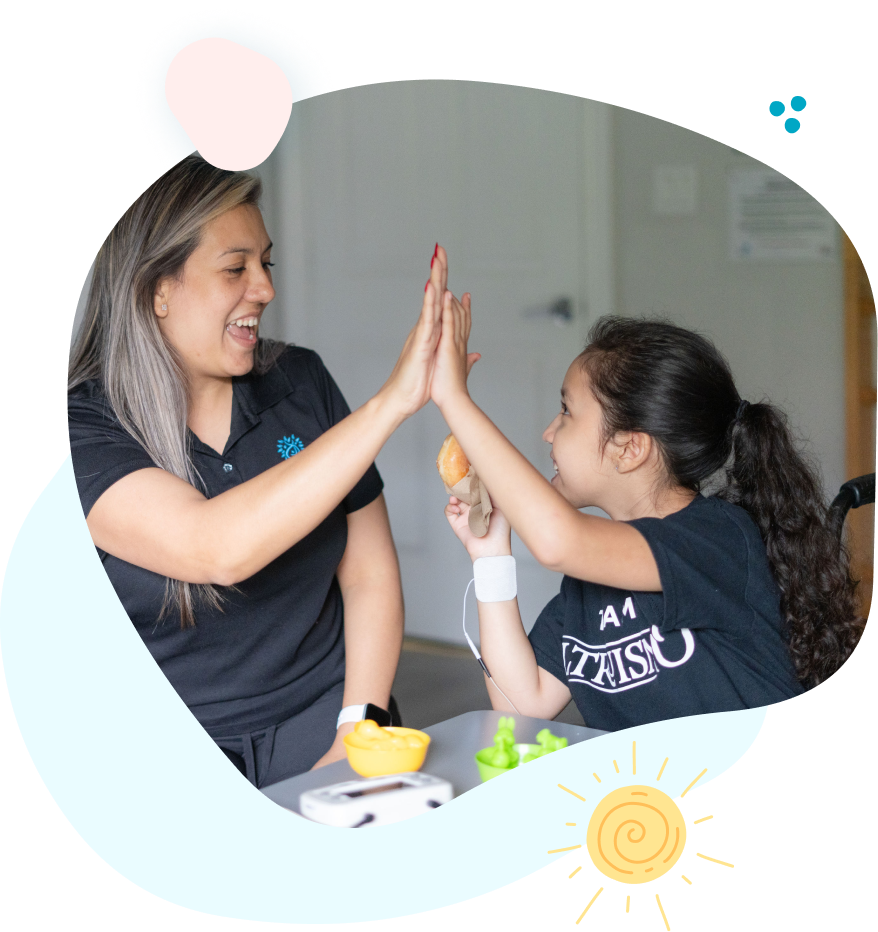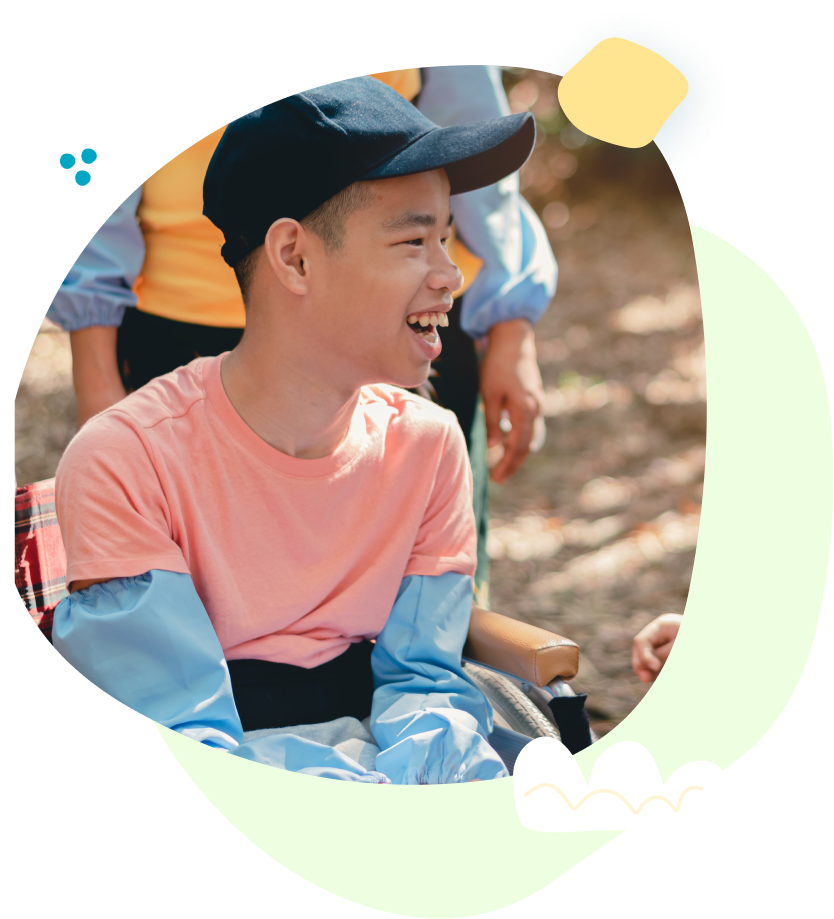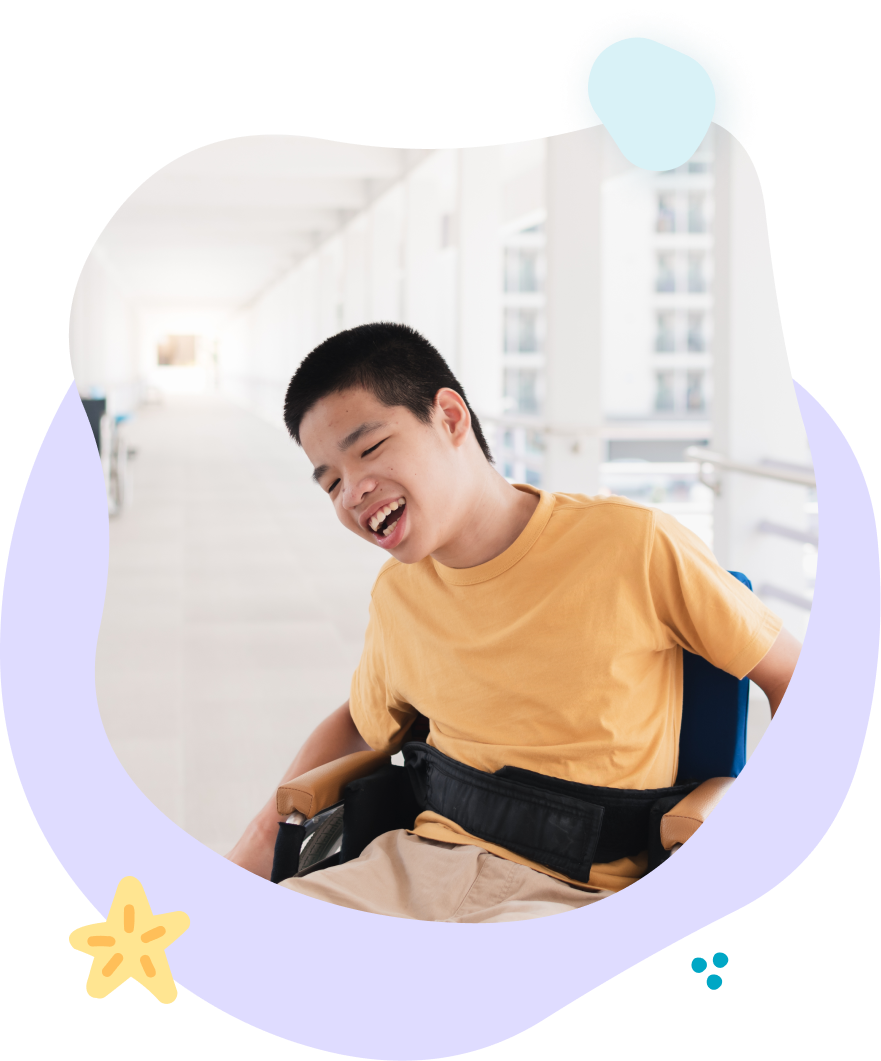Your Clinic
SET A LOCATION
Your Clinic
SET A LOCATION
Cerebral palsy (CP) is a group of neurological disorders that affect movement, muscle tone, and posture. Typically caused by brain damage occurring before, during, or shortly after birth, CP impacts a child’s ability to perform everyday activities and interact with their environment. While there is no cure for cerebral palsy, early intervention through therapies like occupational therapy, speech therapy, and physical therapy can significantly improve a child's quality of life and developmental outcomes.
Children with cerebral palsy may experience a wide range of symptoms, including difficulty with motor skills, speech delays, and challenges in everyday tasks such as dressing, eating, or playing. The severity of CP varies from mild to severe, with each child presenting unique challenges and strengths.
Early and comprehensive care, tailored to meet the specific needs of the child, is critical for promoting independence and enhancing their potential.

Progressive Pediatric Therapy offers one of the most comprehensive tool sets for children with cerebral palsy. Our diverse range of interventions addresses mobility, strength, communication, positioning, and functional independence across all severity levels.






Augmentative and Alternative Communication (AAC) includes tools, from picture boards to advanced devices, that aid children with speech and language difficulties in communicating effectively. This comprehensive approach helps children who have challenges with verbal communication express their needs, thoughts, and ideas through various technological and non-technological methods.
Aquatic Therapy is a skilled treatment method used by therapists to enhance your child's functional abilities. The warm, buoyant water enables your child to feel free and have fun in therapy, in a natural environment! The water's buoyancy reduces stress on joints and muscles while providing resistance for strength building, making it particularly beneficial for children with movement limitations.
Constraint-Induced Movement Therapy, or CI Therapy, is a family of treatments that teach the brain to "rewire" itself. As a result of engaging in repetitive exercises, focusing on use of the affected limb, the patient's brain "rewires" itself allowing the child to learn how to use their affected arm. Helps retrain the brain to improve use of an affected limb, benefiting children with conditions like Cerebral Palsy, stroke, and Brachial Plexus Injury.
Attend our clinics for expert orthotics evaluations and fittings, designed to improve mobility and ensure optimal comfort tailored to your needs. Children at PPT can attend monthly clinics for custom wheelchairs or orthotics, designed to enhance mobility and ensure proper postural alignment. These specialized devices support proper body alignment and improve functional mobility.
PPT uses cutting-edge tools like Galileo whole-body vibration platforms and Mano dumbbells to enhance therapy outcomes. Therapeutic vibration helps to optimize neuroplasticity, promote motor learning and decrease the complications of many childhood conditions that limit movement, sensory processing skills, and learning. A unique therapeutic intervention used to decrease muscle tightness, change habitual patterns of movement in a single joint, or improve range of motion.
The Turtle Brace is a specialized orthotic device designed to provide targeted support and positioning for children with specific postural or alignment needs. This custom-fitted brace helps maintain proper body positioning and supports therapeutic goals related to posture, movement patterns, and functional positioning during activities.
Children at PPT can attend monthly clinics for custom wheelchairs or orthotics, designed to enhance mobility and ensure proper postural alignment. Custom seating must account for a child's growth and evolving needs over the next five years. These comprehensive evaluations ensure that mobility equipment is properly fitted and optimized for each child's specific needs and growth trajectory.
Occupational therapy (OT) focuses on helping children with CP develop the skills needed for daily living. By addressing fine motor skills, sensory processing, and cognitive challenges, occupational therapy provides essential support for:
OT exercises help children grasp and manipulate objects, aiding in tasks like writing or using utensils.
Therapists guide children through activities such as dressing, grooming, and using adaptive equipment tailored to their abilities.
For children who struggle with sensory overload or under-responsiveness, OT helps them process sensory information effectively.
Occupational therapists work closely with families to create individualized plans that foster growth and independence in both structured settings and daily life.

Speech therapy is vital for children with CP who face challenges in verbal communication, feeding, or swallowing. Speech-language pathologists (SLPs) aim to:
Through targeted exercises, children develop their ability to articulate words and construct sentences.
For non-verbal children, SLPs introduce augmentative and alternative communication (AAC) systems, such as picture boards or speech-generating devices.
Therapy can help children strengthen oral muscles to ensure safe eating and reduce the risk of choking.
Speech therapy fosters meaningful connections, giving children the tools they need to express themselves and interact with the world around them.
Physical therapy (PT) addresses gross motor skills, mobility, and physical strength, all crucial for children with CP. Physical therapists design exercises and interventions to:
Stretching and strengthening activities help reduce spasticity and promote more fluid movement.
From learning to walk with assistive devices to navigating a wheelchair, PT supports mobility at every level.
Regular therapy reduces the risk of joint contractures, scoliosis, and other complications associated with cerebral palsy.
Physical therapy empowers children to explore their environment and build confidence in their abilities.

The earlier a child with cerebral palsy begins receiving therapy, the greater the opportunity for positive developmental outcomes. A coordinated approach, involving a team of therapists, doctors, and educators, ensures that the child receives comprehensive care.
With the support of occupational therapy (OT), speech therapy (SLP), and physical therapy (PT), children with cerebral palsy can overcome challenges, discover their strengths, and lead fulfilling lives.
Therapy not only benefits children but also equips families with the tools and strategies to support their child's growth. By fostering independence and encouraging skill-building, these therapies help create a foundation for lifelong learning and resilience.
If your child has been diagnosed with cerebral palsy, our team of dedicated therapists is here to help. Contact us today to learn how occupational, speech, and physical therapy can make a difference in your child’s development. Together, we can build a brighter future.
We empower children, families, and the community to learn, grow, and celebrate every child's unique abilities.
Quick Links
Contact Details
Phone: 561-376-2573 | 561-918-0190
Fax: 561-218-4939
VIP Concierge: 561-717-1764
Clinic Locations
All Rights Reserved | Progressive Pediatric Therapy, Inc. | Privacy Policy | Terms of Service
Site by Spearlance